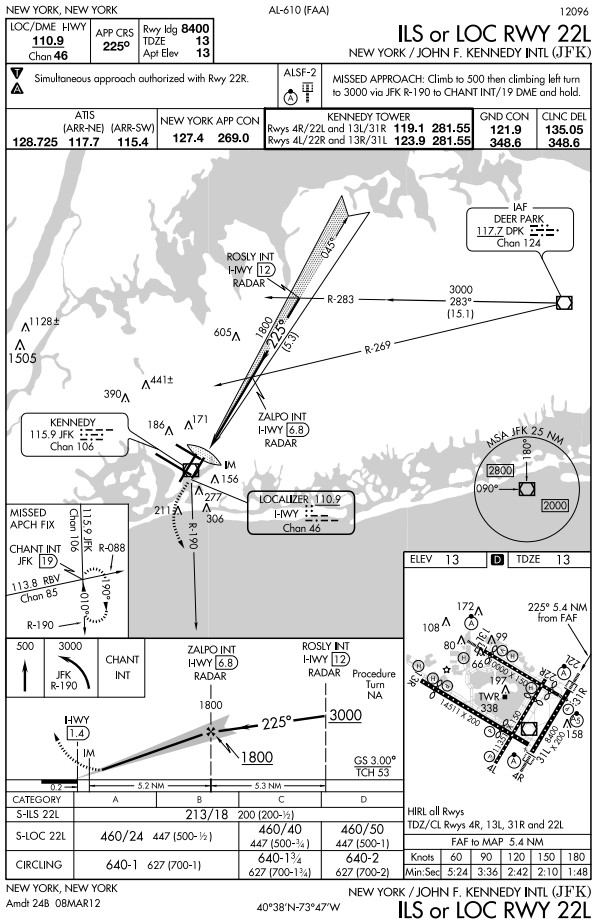Aircraft Operations
Aircraft operations guide the flow of traffic throughout the National Airspace System through the use of standard procedures.
Introduction to Aircraft Operations
- Aircraft operations guide the flow of traffic throughout the National Airspace System through the use of standard procedures.
- Procedures begin with ground operations, which mark the start and end of all active flight operations.
- Increased traffic congestion, aircraft in climb and descent attitudes, and pilot preoccupation with cockpit duties are some factors that increase the potential for hazardous accidents near the airport.
- The situation compounds when the weather is marginal, meaning it just meets VFR requirements.
- Pilots must be vigilant when operating in the vicinity of an airport.
- This section defines some rules, practices, and procedures that pilots should be familiar with and adhere to for safe airport operations.
- Aircraft operations begin with departures from the terminal environment and transition into the Enroute environment.
- Operations include:
Airport Operations
- Increased traffic congestion, aircraft in climb and descent attitudes, and pilot preoccupation with cockpit duties are some factors that increase the potential for hazardous accidents near the airport. The situation compounds when the weather is marginal, meaning it just meets VFR requirements. Pilots must be vigilant when operating in the vicinity of an airport. This section defines some rules, practices, and procedures that pilots should be familiar with and adhere to for safe airport operations.
Departures
- Departure procedures facilitate the flow of traffic out of the terminal area.
- They may be simple, like departing in a direction on course, or complex instrument procedures through the busiest airspace in the country.
Enroute Operations
- Once enroute, pilots fly the highway of the skies, typically known as Airways. Although the FAA publishes many routes between navigation aids, pilots may elect to fly direct between fixes (known points).
- Flights Outside the U.S. and U.S. Territories.
- Reporting.
- VFR-On-Top.
Arrival Procedures
- Transitioning from the enroute to the terminal environment often requires the use of standardized procedures to guide the flow of traffic.
- The FAA/DoD accomplishes this task through Standard Terminal Arrivals (STARs).
Approach and Landing
- Following the enroute phase of flight, a pilot enters a terminal area for an approach and landing.
- The term "approach" has become a general term and may refer to operations under Instrument Flight Rules or to describe the terminal phase of flight to landing when flying Visual Flight Rules (VFR).
- Therefore, different types of operations will have different types of approaches and terminology.
- Operations under VFR:
- Operations under IFR:
- Instrument approach plates depict Instrument Approach Procedures (IAPs).
- The instrument approach plate consists of five principal sections:
- The Pilot Briefing and Procedure Notes;
- The Plan View;
- The Profile View;
- Approach Minimums, and;
- The Airport Diagram
- The pilot briefing and procedure notes describe the approach and relate directly to the conduct of an Approach brief.
- The plan view depicts a birds-eye view of the procedure, which can be a Charted Visual Flight Procedure, an Instrument Landing System approach, or an RNAV approach procedure.
- The profile view depicts the same procedure as viewed from the side (profile).
- Different approaches are published to meet the needs of equipment and locality requirements, including:
- The approach terminates in the published Approach and Landing Minimums in the approach minimums section.
- If, for whatever reason, pilots are unable to complete the approach, they conduct the missed approach.
- Finally, an airport diagram thumbnail provides an overall view of the terminal area.
- Non-charted approaches include:
- When selecting instrument approaches, several conditions may factor into the decision, including:
- Expected weather conditions.
- Equipment on board.
- Types of approaches available for landing on a runway.
- Runway approach lighting is available to identify the runway environment.
- Operations under either VFR or IFR:
Terminal Area
- The terminal area is a general term used to describe airspace in which air traffic control provides approach control services.
- The terminal area centers around either a single airport or a series of airports.
- These airports follow a standardized layout, including airport markings and signs.
- Standardizing traffic flow through traffic pattern procedures ensures safe and predictable operation.
- Standardization includes visual glide slope indicators for approaching aircraft and Landing and Hold Short Operations (LAHSO).
- For reduced visibility/night operations, airport lighting allows for day procedures to carry over safely.
- The FAA's Airport Database maintains detailed information and reports about airports.
- The FAA Safety Team also provides resources aimed at preventing wrong surface events.
- The FAA also publishes its From the Flight Deck series, which provides additional information for individual airports.
Night Operations
- Night operations require increased vigilance, even for the most experienced pilot.
- Although operations are generally the same, everything becomes a little more challenging and therefore risky at night.
- Given the increase in risk, some regulations include buffers to increase the margin of safety.
Gliding/Soaring
- Gliding or soaring involves using atmospheric effects to remain airborne.
- Typically cheaper than powered aviation, gliders provide a low barrier to entry and don't require a medical for those who may be unable to obtain one.
- Since gliders may fly an unpredictable flight path, varying altitude, and speed, VFR pilots not in contact with ATC should squawk 1202.
- Thermal Soaring.
Aircraft Operations Conclusion
- Additional resources are available through tools such as the FAA's Runway Safety Simulator.
- Still looking for something? Continue searching:

